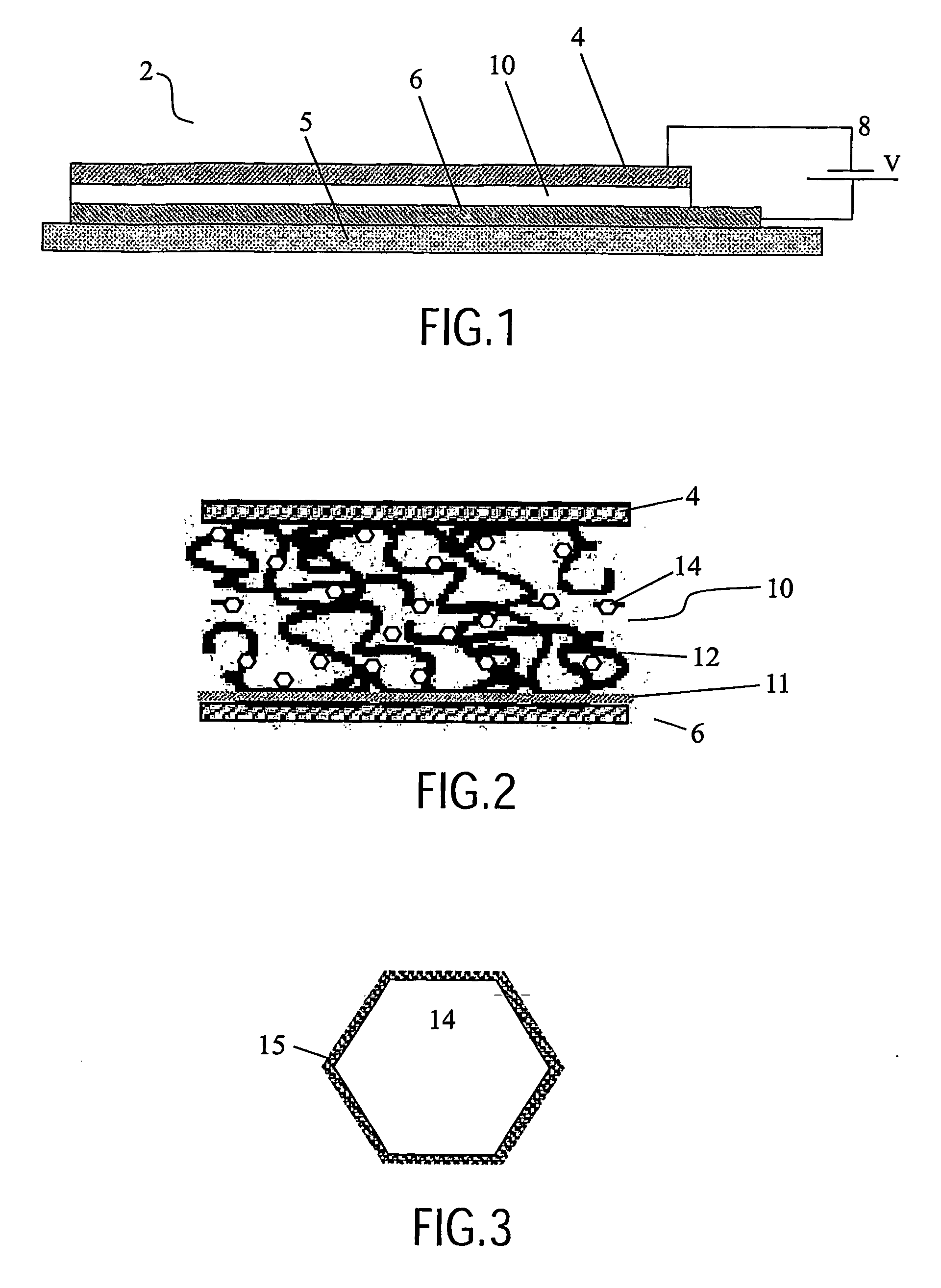Electroluminescent device
a technology of electroluminescent material and electrode, which is applied in the field of electroluminescent devices, can solve the problems of difficult coupling of excitons from electroluminescent materials into qds, limited stability of dye molecules, and difficulty in exciton transfer to quantum dots, so as to improve the power efficiency and performance of all devices, improve the power efficiency and performance of devices, and improve the effect of light emitting devices
- Summary
- Abstract
- Description
- Claims
- Application Information
AI Technical Summary
Benefits of technology
Problems solved by technology
Method used
Image
Examples
Embodiment Construction
[0077] In a preferred embodiment shown in FIG. 1, the invention provides a light emitting device 2. The device comprises a cathode 4 and a transparent anode 6 on a transparent substrate 5 with a power supply 8 for creating an electrical field between these. Between the electrodes is a light emitting layer 10 consisting of a blend of electroluminescent organic molecules and QDs. In the described embodiments, the organic molecules are polymers.
[0078]FIG. 2 shows an illustration of an enlarged section of the device 2 of FIG. 1, the figure exaggerates the relative size. Here, the light emitting layer 10 is seen to consist of a matrix of polymers 12 with QDs 14 with transfer molecules distributed throughout the matrix. Also, a thin film planarising layer 11 is seen between the anode 6 and the light emitting layer 10.
[0079] In the following, a preferred method of fabrication of the light emitting device 2 of FIGS. 1 and 2 is described. When designing the device 2, the electrode work fun...
PUM
 Login to View More
Login to View More Abstract
Description
Claims
Application Information
 Login to View More
Login to View More - R&D
- Intellectual Property
- Life Sciences
- Materials
- Tech Scout
- Unparalleled Data Quality
- Higher Quality Content
- 60% Fewer Hallucinations
Browse by: Latest US Patents, China's latest patents, Technical Efficacy Thesaurus, Application Domain, Technology Topic, Popular Technical Reports.
© 2025 PatSnap. All rights reserved.Legal|Privacy policy|Modern Slavery Act Transparency Statement|Sitemap|About US| Contact US: help@patsnap.com



